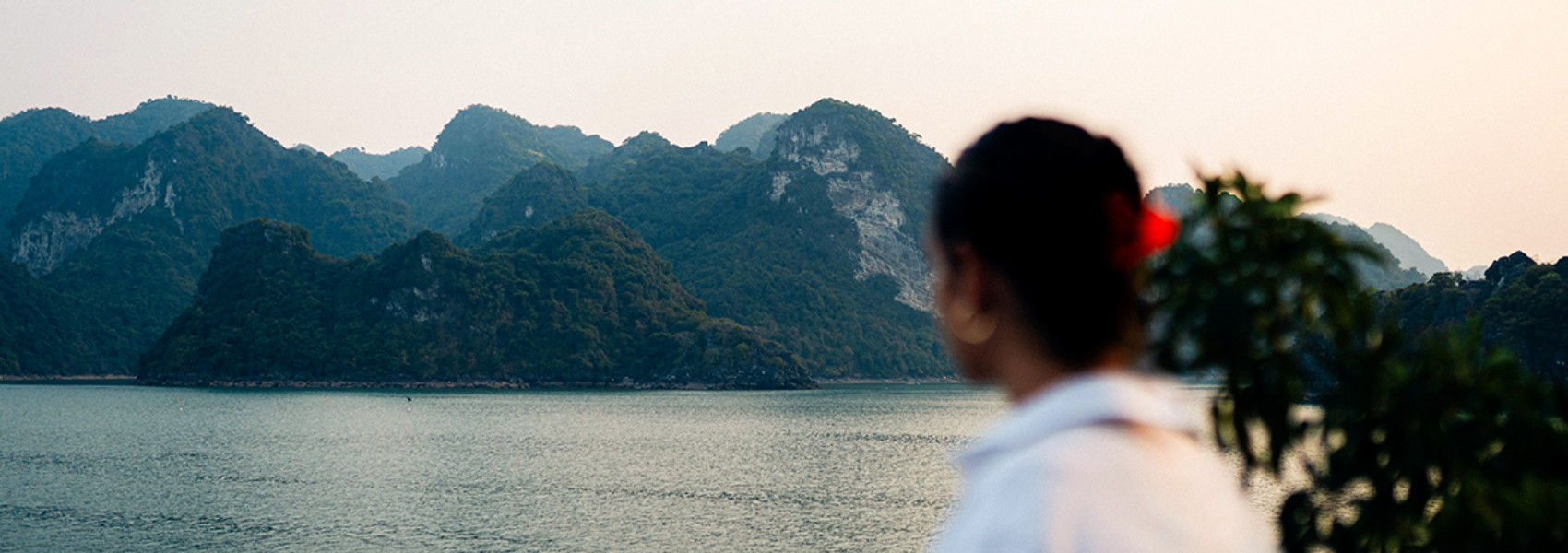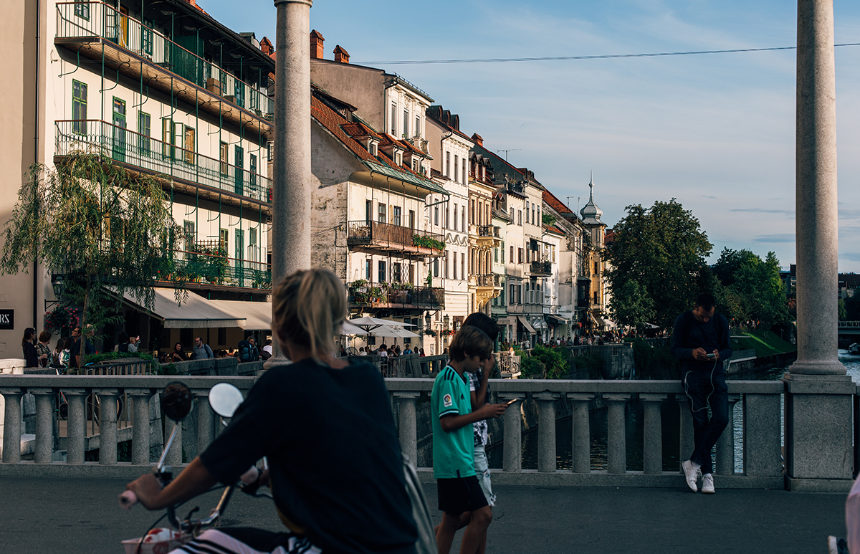
Published 28th Oct. 2025
Reading time
For those of us who don’t have to adhere to the constraints of the school holidays, we have a wide choice when it comes to choosing what season to travel in. Though the summer remains a top choice, thanks to the good weather across much of the Northern Hemisphere and the general societal norm of treating ourselves to a break at this time, the so-called ‘shoulder season’ is becoming ever-more popular.
With typically less extreme weather than peak or off-peak times and with the visitor numbers to support a bustling vibe without it feeling too busy, it’s easy to see why the shoulder months might appeal. It’s typically less expensive, too, meaning you can holiday for less, or afford to book more high-end experiences and accommodation than your budget might otherwise allow.
In this guide, we explore some of the benefits of shoulder season travel in more detail, share our tips for planning this kind of break, and list some of the top destinations you should be considering for your next shoulder season holiday.
Shoulder season refers to the times of year that fall outside of peak season, but also aren’t yet low season. Think of it as the sweet spot where you’ll get the benefits that come with peak season – generally good weather, plenty of accommodation options, good public transport schedules – but without the crowds or higher prices that peak commands. Of course, off-peak season is even cheaper, but you’re running the risk of poor weather or limited opening hours of top attractions.
But why is it called shoulder season?
The term was coined on the idea that this travel period sits on the ‘shoulders’ of the peak and off-peak seasons. For that reason, it’s not necessarily the same months in every destination – Japan, for example, is highly popular in summer but also in the cherry blossom season in early spring, which can push up prices. In comparison, somewhere like the UK really only gets warm in the summer, so there’s just one main peak season, with shoulder season covering the month or so either side. As a general guide:
- Shoulder season in Europe is April-May and then September-October
- In North America it’s April-May and September-October
- In South America it’s March-May and September-November
- In Asia it’s March-May and September-November
- In Oceania it’s March-May and September-November
- In Africa it’s April-mid June and October-November

Image by Julia Nimke
Travel pricing is always based on demand – flights, accommodation and even activity costs go up in the peak season, to match the number of visitors. As a result, perhaps one of the biggest tangible benefits of travelling in shoulder season is the reduced cost. Whether that means that you’re able to travel further, upgrade your flights or add some more activities to your itinerary, shoulder season savings can cut the cost of your holiday without compromising on experience.
The data speaks for itself:
- Research by Nerdwallet (using U.S. flight data) showed that plane fares in the last week of August are 57% cheaper than flights over the Christmas period.
- Major attractions like DisneyWorld are around 33% more expensive in December than September
- Some research suggests that the overall cost of a trip can be reduced by 20-40% by travelling in shoulder season
- Extras such as car hire can be reduced by 30%-50% in comparison to the summer months

Image by Faustine Poidevin-Gros
Far away from the more extreme heat and cold of the peak and off-peak seasons, shoulder season generally brings milder temperatures. If you’re someone who struggles with exploring outside in hot weather, or would like to avoid the need for a big jacket, gloves and a hat, then shoulder season could be a better fit. While in many places there is an increased chance of rain, it’s often worth packing an umbrella and hoping for the best in exchange for the other benefits this time of year offers.
Shoulder season tends to fall on either side of the summer months, especially in Europe, meaning you can still enjoy walking around in a t-shirt during the day and then just put a jacket on as the sun sets. Or, if you travel in September, the sea will be pleasantly warm from a summer of sun, allowing you to take a dip without having to get up early to secure your spot on the beach.
Shoulder season is particularly worth considering if you’re travelling to a country with a climate you’re not accustomed to – places like Japan and Singapore, for example, have notoriously high humidity as well as high temperatures during the summer, which can be challenging if you’re used to the weather in the UK.

Image by Olivier Romano
Peak season naturally brings with it higher visitor numbers, particularly in family-friendly destinations, thanks to the school holidays. In fact, research by Eurostat shows that July and August were the most popular months, accounting for one third of total tourism nights for EU residents.
As a result, even lesser-known destinations can begin to feel crowded. However, on the positive side, it does mean that the majority of attractions and restaurants will be open, in order to cater for the increased visitor numbers. In comparison, many places shut or offer reduced opening hours in the off-peak season, to balance out demand and allow time for rest and renovation. This means that generally a lot more planning and flexibility is required – you’ll be able to enjoy the quietness of fewer crowds, but won’t always be able to do everything you’d like to.
Shoulder season is the perfect combination of the two. Depending on which side of peak you travel, visitor numbers will either be starting to increase – and so everything will start to open up and will be full of energy – or they’ll be decreasing, so you can reap the benefits of restaurants that have been running service all summer long, and are running like a well-oiled machine. Either way, you should benefit from more availability and lower wait times, both of which mean a more relaxed break.

Image by Olivier Romano
For some people, working out exactly what they want to do each day and lining up restaurant reservations weeks in advance is all part of the fun of the holiday. If that’s you, then you’ll know the feeling that comes with creating the perfect holiday itinerary. But even for the planners, there’s a fine line between getting things just how you want them and the inconvenience of having to wake up in the middle of the night to book tickets in another timezone, or having to book a restaurant super ahead of time to get the timeslot you want.
For those who don’t want to do such extensive research and prefer to go with the flow, peak season can also be challenging. Especially if you’re travelling with children or as a group of friends, booking becomes essential during busy periods, to ensure that you can all sit together. This doesn’t always go hand-in-hand with spontaneous travel…
The lower visitor numbers in shoulder season give you the choice: book early and know exactly what you’re getting, or see what you want to do closer to the time.

Image by Pauline Chardin
It’s probably not your number one priority when booking a holiday, but an increasing number of us are considering the sustainability of our trips wherever possible. Peak season can cause a big strain on tourist destinations, who have to manage increased resource demand (food, water and electricity, for example) as well as the physical impact of footfall on streets and tourist attractions, and an increased amount of waste. Animals and natural habitats are also impacted by overtourism, with long-lasting effects.
Additionally, the increase in holidays mean more flights are needed – data from the Office of National Statistics (ONS) shows there were 196,716 flights in August 2025, in comparison to 155,643 flights in March 2025. Since flying is a carbon-heavy way to travel, this extra demand has negative consequences on the environment.
Travelling in shoulder season is a good way to do your bit and help balance tourist footfall more evenly across the year. Plus, fewer visitors means that you’re more likely to get your preferred pick of accommodation options.

Image by Pauline Chardin
Looking to try some local food, go on a tour with a local guide, or wander around a city until you find a small side street filled with local shops? If so, you’ll probably want to avoid the crowds that come with peak season.
Especially when it comes to food, the demands of peak numbers can make it challenging to stock restaurants with seasonal ingredients, due to the volume needed. They’re more likely to stick to dishes they know they can get the ingredients for, to avoid having to change the menu. However, in shoulder season, chefs have a chance to slow down and really highlight the food that the region is famous for, adding seasonal specials for you to enjoy.
In shoulder season, tour guides can slow down too, answering your questions and providing more tailored recommendations thanks to smaller group sizes. Smaller groups may mean that you can pop into local shops or visit size-restricted attractions such as temples that might not be possible with more people too.

Image by Marie Champenois
While many big festivals and cultural events happen in July and August, thanks to the longer evenings and better weather, there’s still plenty to be enjoyed in spring and autumn too. Mexico’s Día de Muertos, Germany’s Oktoberfest, the Hindu festival of Diwali and Thailand’s Loy Krathong Lantern Festival all happen in autumn, for example, while spring is synonymous with Easter festivals and celebrations focusing on new beginnings.
Researching local festivals can give you the opportunity to enjoy something very special, immersing you in the culture and history of your destination. Depending on the scale of the celebrations, it’s also a great way to try lots of different foods, as well as experiencing traditional activities like dancing and music, which may be difficult to find outside of these specific times of year. Local tourism sites can be a great way of finding these festivals, as many keep an online calendar.

Image by Ashish Vaishnav / SOPA Images/ZUMA/REA
While you should still benefit from regular opening hours, it is worth checking for attractions that may use ‘summer opening hours’ in their scheduling – you might be travelling slightly too early or too late to take advantage of these. Additionally, some places will start to rotate a closure day into their scheduling if they haven’t done so over the peak periods.
Checking the opening days and times of any attractions you want to visit – or being flexible with your schedule – will mean you don’t waste time travelling to a place that’s closed when you get there.
If you’re planning to be out late, it’s also a good idea to check the last trains or buses if you’re relying on public transport. These can change seasonally, as well as on the day of the week, and there’s more likely to be maintenance work going on in shoulder season. You can use Google Maps to do this – simply search for a route between the points you want to go to, select public transport and choose ‘last available’. Equally, if you want to get to a viewpoint at sunrise, check the time you need to be there using a weather app, and then select ‘arrive by’ on Google Maps instead.
Remember that online maps aren’t perfect, so if taxis aren’t an option, then it’s better to aim for the train before the last one, in case of a train cancellation or an information error.

Image by Alixe Lay
At first, the variable weather that often comes with shoulder season might seem like a disadvantage. However, it’s easily manageable by adjusting your packing list. Bringing layers is a great way to be prepared for a variety of weather conditions, and you’ll probably want to take a rain jacket with you too. Of course, you’ll also be able to check the weather forecast closer to the time, so you can adjust your suitcase accordingly.
One of the joys of shoulder season is having the space to slow down and discover things at your own pace. There’s no crowds jostling you along if you stop to peer down a side street, and you don’t have to worry about time restrictions on your restaurant reservations. To get the most out of a trip at this time of year, embrace the slowness – leave room for spontaneity by only scheduling in one planned activity per day, for example.
If you’re taking a longer trip and are moving around, shoulder season is also a great time to travel by train. With quieter stations and stunning scenery that’s changing with the weather, a slow travel train journey is a surefire reason to pick shoulder season.

Image by Olivia Spencer / Kintzing
If the idea of a shoulder season holiday has captured your imagination, then the next step is to choose where to go. Let’s look at some of the best destinations for shoulder season travel.
Top destinations: Athens, Barcelona, Budapest, Florence, Istanbul, Lisbon, Madrid, Paris, Prague, Rhodes, Rome, Venice
There’s something glorious about visiting a city when it’s comfortably warm enough to sit outside, but not yet crowded. The destinations we’ve listed above are perfect for a city break, whether you’re planning a long weekend getaway or have time to visit perhaps two or three places as you tour a country, such as Italy.
These destinations are family favorites, so you should also see a drop in prices during the shoulder season, as demand also decreases outside of school holidays. Spring and autumn are the perfect times to visit, when temperatures average around the late teens in northern Europe, and warm up to the mid twenties in more southern cities. Easter celebrations are common in Catholic countries such as Spain, so make sure to bear this in mind – they’re an amazing spectacle, but can increase prices slightly for a couple of weeks.

Image by Cecilia Renard
Top destinations: Bali, Tenerife, Vietnam
The turning leaves of autumn and blossom-filled trees in spring can be charming, but what if you prefer your holidays a little warmer? For those who like to escape the cooler days and soak up the sun, further afield destinations such as Bali, Tenerife and Vietnam all promise t-shirt weather at a time when you’d be wrapping up warm back home
Equally, if you’re someone who struggles with the hotter temperatures in July and August, shoulder season is a great time to explore these destinations. There’s no need to miss out on the magic – simply book your break during April, May, September or November. You’ll also miss the rainy season in Bali and Vietnam (although timings for this do vary by region).

Image by Olivier Romano
Top destinations: Japan, New England
One great example of when shoulder season ties in with a special event is autumn foliage season. Places such as Japan and New England are renowned for their beautiful changing colours, so much so that travelling at this time of year is on many travellers’ wishlists. However, there’s still fewer crowds than peak season, particularly if you’re not set on timing your trip for the height of the colour change.
You’ll also discover that locals in Japan love to embrace seasonality, and as such, several autumn festivals take place, so make sure to check if there’s anything on when you’re visiting. In New England, USA, autumn (fall) is a time to take a scenic drive to see the orange-and-red scenery, go apple picking and see the spooky Halloween decorations.
Hopefully, reading this has got you feeling inspired to try a shoulder season break for your next holiday. Whether you’re intrigued by the seasonal celebrations in Asia or want some off-season sun in the Canary Islands, there’s plenty of reasons why this time of the year could be your perfect time to travel.
Header image by Spenser Sembrat / Unsplash
Practical advice and inspiration for your next trip

Ljubljana, sometimes nicknamed ‘Little Prague’ or ‘The City of Dragons’, is an unsung gem. Slovenia’s capital city deserves more than just a day, but if you’re limited on time, we have the perfect guide on how to spend 24 hours in Ljubljana. Enjoy a boat cruise on the historic Ljubljanica River, learn about legends of mythical beasts and marvel at the Medieval Ljubljana Castle which watches over the city from its hilltop perch.
11th December 2025 - Slovenia Travel Inspiration

There’s more to Tunisia holidays than blissful beaches. History buffs are in luck with plenty of UNESCO World Heritage sites to explore, while architecture enthusiasts can admire the coastal towns’ white-washed facades. If natural wonders are more up your alley, Tunisia’s vast salt flats and towering palm groves are a must-see, while the artisanal treasures in the Medina of Tunis await those on a souvenir search.
9th December 2025 - Tunisia Travel Inspiration

Saudi Arabia may be relatively new to the international tourism scene, but it still has plenty to shout about. Fusing sleek modernity with ancient heritage, this mighty Middle Eastern nation boasts a whopping eight UNESCO World Heritage sites, copious cultural landmarks and untouched natural beauty. Not to mention its hearty cuisine, thriving coral reefs and idyllic island chains. Still wondering, why visit Saudi Arabia?
1st December 2025 - Saudi Arabia Travel Inspiration

Our team of destination experts will get to know you and your unique requirements for your holiday

We work with you to build an ultra-personalised holiday itinerary with your choice of accommodation, experiences and activities

All of our holidays include little extras designed to make a big difference to your trip, from fast-tracking you through airport check-in and security to our network of local Concierges